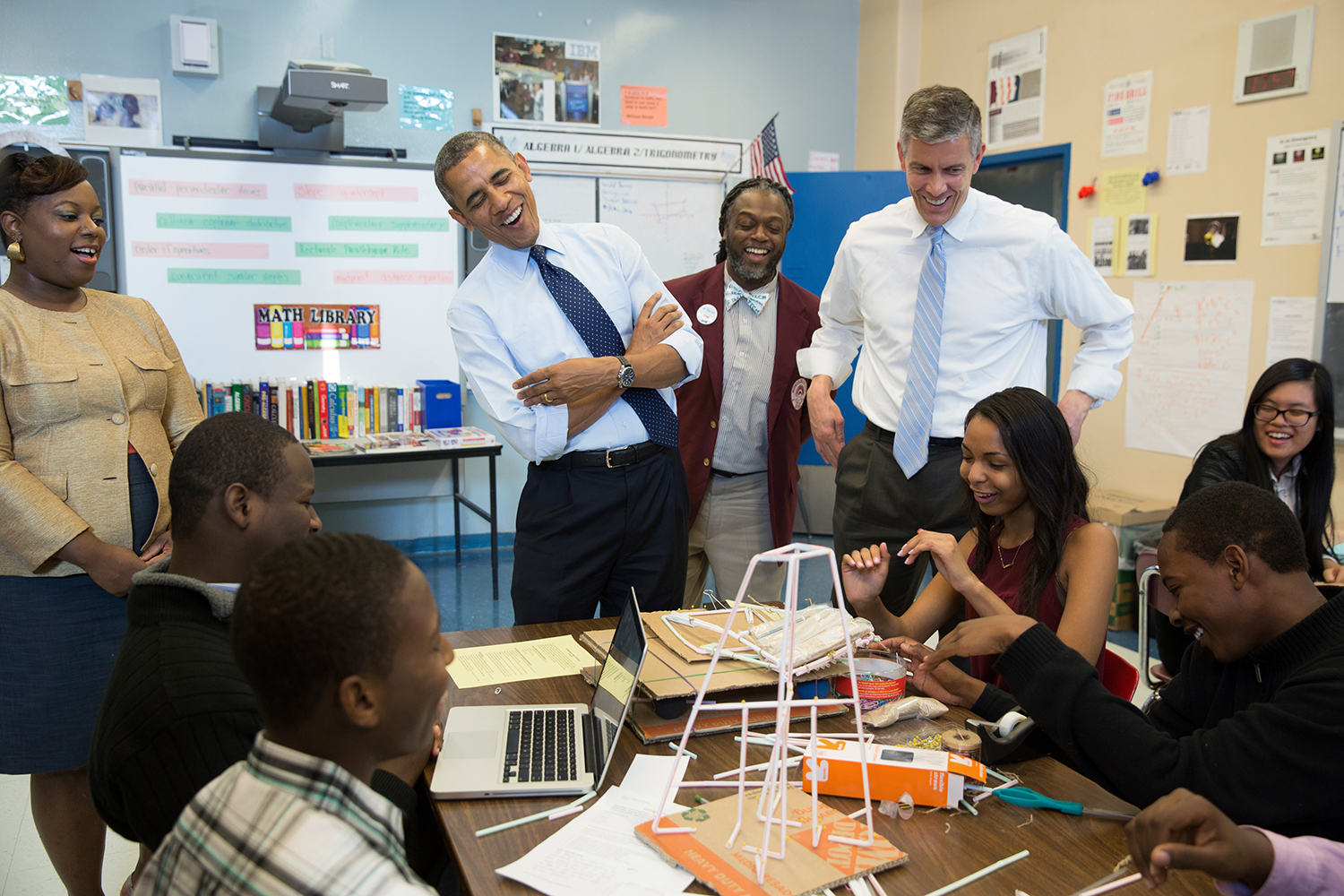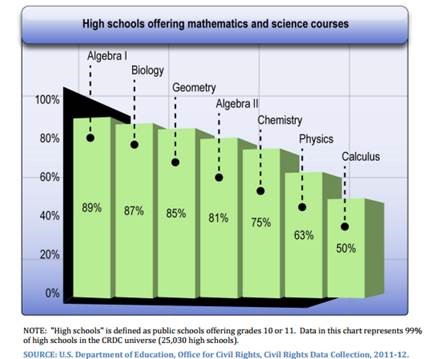

High School is a critical time when we rapidly mature towards adulthood, learn the key skills that prepare us for college and our career, and if given the opportunity, develop a much deeper understanding of the community and world around us. When high schools are designed for the 21st century, they are a springboard into opportunity. And in today’s innovation economy, with rapid growth in high-wage fields of science, technology, engineering and math (STEM), the role of high schools is more important than ever.
President Obama has set two ambitious goals: that all adult Americans pursue at least one year of higher education or career training, and that America regain its role as the world leader in the college completion. However, for too many American students, high school is a time of disengagement that fails to put them on a path to college and career success.
That’s why the President has called for whole-school transformation of the high school experience, and visited leading examples such as Manor New Tech in Texas and P-TECH in New York. These next-gen schools are breaking out new approaches to: help their students excel by implementing personalized learning for all students; rethinking the use of time during the school day to match student needs; assessing learning in ways that let students demonstrate mastery, creativity, and critical thinking; providing high-quality and continuous professional development to support educators; and a slew of other school redesigns and evidence-based practices to help students chart a course for life-long success.
 Still, a handful of exceptional schools on their own won’t reach the millions of students across the country who do not have access to the rigorous content they need to be successful, including basic STEM courses and opportunities, and a greater effort is needed to bring next generation learning innovations to all students.
Still, a handful of exceptional schools on their own won’t reach the millions of students across the country who do not have access to the rigorous content they need to be successful, including basic STEM courses and opportunities, and a greater effort is needed to bring next generation learning innovations to all students.
Only 50% of high schools in the U.S. offer calculus, only 63% offer physics, and between 10-25% of high schools offer one or less of typical core math and science courses such as Algebra I and II, geometry, biology, and chemistry. There is a particular shortage of these courses for students who are under-represented in STEM fields, where currently, a quarter of high schools with the highest percentage of African-American and Latino students do not offer Algebra II, and a third do not offer any chemistry. The data below from the U.S. Department of Education Office of Civil Rights illustrates these shortcomings nationally.
In response to this critical challenge, the President has called for a whole-school transformation of the high school experience. The 2016 Budget calls for the establishment of a new $125 million competitive program at the U.S. Department of Education to help communities across America launch Next-Generation High Schools that will be laboratories for cutting-edge STEM teaching and learning, demonstrating the tenets of high school reform that the President has championed.
This November, the administration will host the Next Gen High School Summit, a national conversation on transforming high schools to better serve all students. This convening will catalyze new thinking on the challenges and opportunities for advancing this agenda, and to share strategies for progress. It will also serve as an opportunity to highlight new resources and investments - from the federal government and others- dedicated to advancing high school redesign work. All stakeholders will be brought to the table, from teachers who work every day to inspire their students, administrators ensuring their teachers have tools and support they need, researchers breaking ground in learning science, industry and foundation leaders who are seeding exciting work in communities across the country, and the full spectrum of other partners working to create a more equitable education system.
High school is perhaps the most formative time in young peoples’ lives. With the President’s leadership and a renewed effort from all who work to improve America’s schools, we can create new havens of learning and opportunity, and create a better system of education for all.
Challenge to Redesign High Schools
To emphasize ways in which we can rethink how we provide a high school education to America’s students, we plan to highlight strong collaborations that have committed to engage in comprehensive high school redesign work through new or existing models. At the fall summit, we hope to announce your commitments to produce more next generation high schools in your communities, with a particular focus on those that will benefit low-income and under-represented students, along with commitments to action to ensure more students graduate with college-level coursework or college credit, as well as with career-related experiences or competencies.
This web form will provide us with a brief overview of your goals and commitments and a description of your action plan. This information may form the basis of public materials developed for this event. We encourage interested collaborations to also download the worksheet that will allow each collaboration to share more detail with us about your specific indicators, data, and strategies you are using as you develop these plans. Only 1 submission per collaboration needs to be submitted and campuses may submit additional materials (if desired) through the use of appendices, which should be submitted to educationpolicy@who.eop.gov.
Please submit this form no later than COB Friday, October 30, 2015.
We intend to make the description of goals and commitments public in conjunction with the summit in the fall. While we intend to invite as many organizations making commitments as possible, we have not finalized the details of the event and will share more information in the coming weeks.


